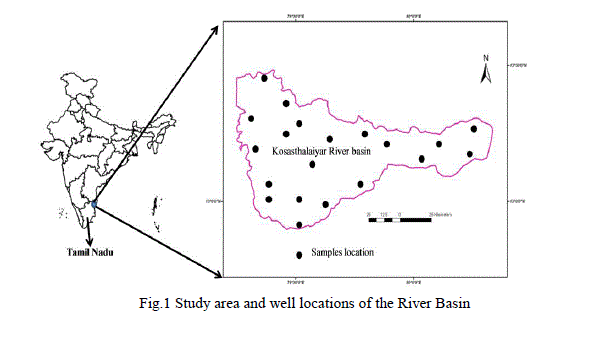ISSN ONLINE(2319-8753)PRINT(2347-6710)
ISSN ONLINE(2319-8753)PRINT(2347-6710)
| P Pandari Reddy1, G.Sunitha Devi1, Shaikh Afsar2 |
| Related article at Pubmed, Scholar Google |
Visit for more related articles at International Journal of Innovative Research in Science, Engineering and Technology
Application of pesticides in agricultural practices has elevated the risk of contamination of aquatic habitat and its ambient environment. Considering the fact , the present investigation was carried out to study the impact of sublethal concentration of chlorpyrifos exposed after regular interval of 24, 48,72 and 96 hrs on leukocyte sedimentation rate of freshwater fish Channa striatus .This is common edible fish abundantly found in Manjira river of Telangana state. The Godavari platoon is well flourished by various crop cultivations .Hence the farmers use chlorpyrifos as an effective insecticide to control various pests. Ultimately the excess run of water carries chlorpyrifos reaches to the aquatic habitat and disrupting the aquatic biota. In present study, The haematological analysis showed significant increase in leukocyte sedimentation rate of treated animals as compared with control.
Keywords |
| Chloropyrifos, L.S.R and Channa striatus |
INTRODUCTION |
| Pesticide are potentially harmful chemical liberated into the environment in an unplanned manner. Due to their indiscriminate usage, water bodies like ponds, lakes and rivers are continuously polluted [12]. In India 70% of chemical formulations employed in agricultural practices are believed to affect non-target organisms and find their way to freshwater bodies, ultimately polluting them [4]. Chlorpyrifos was one of the earliest organophosphate insecticides developed in 1950. Haematological profile of an organism gives a clear insight into effect of environmental stresses and blood being a medium intercellular and intracellular transport which comes in direct contact with various organs and tissues of the body. Hence analysis of blood sample is considered important diagnosing the structural and functional status of fish exposed to toxicants [2]. The toxic effect of pesticide to blood of tissues has been studied by many workers[3],[11],[12],[16],[17] . |
MATERIAL AND METHOD |
| The fish Channa striatus were collected from Manjira river of Telangana state and brought to laboratory. These fishes were observed for any pathological symptoms and then placed in 0.1% potassium per magnate (KmNo4) for 15 days . The fishes were then washed with water and acclimatized to laboratory conditions in glass aquaria of 50 L. The physico-chemical parameters of water analyzed by following standard method suggested by [7]. |
| During acclimatization the fishes were provided with a diet consisting of live earthworms on alternate day. Food supply was withdrawn 24 hrs prior to experimentation. A commercial grade of pesticide chlorpyrifos 50% EC was used for bioassay test. A stock solution of pesticide was prepared in acetone by dilutions. Required dilutions were prepared from stock solution in tap water. |
| The physicochemical parameters of test water was analyzed at regular intervals by following standard method [7].The LC50 values of chlorpyrifos for Channa striatus was determined by the procedure of [10] . The LC50 values of chlorpyrifos was 4 ppm for 96 hours for Channa striatus. Sublethal Concentration (i.e. 1/5th of LC50 i.e. 0.8 ppm) was used for L.S.R.determination as mm/hr and was measured by Micro-wintrobe method of Blaxhall and Daisley (1973). |
RESULTS AND DISCUSSION |
| Many siginificant changes were induced by chlorpyrifos on Leukocyte sedimentation rate (ESR) of fish, Channa striatus as shown in Fig-1.An increase in LSR(mm/hr) from 7.40 mm/hr, 7.35 mm/hr and 6.63 mm/hr ,6.46 mm/hr during 24,48,72 and 96 hours as compared with control (9.91 mm/hr), Significant decrease L.S.R content was resulted as compared to control group in 24 and 48, 72 and 96 hrs the (Fig , 1). |
 |
| Haematological parameters like LSR are important in health status of any organism. In fishes, they are used for clinical diagnosis of fish physiology,which is determined by the effect of internal and external physical environment [1]. The effect of sublethal concentration of chlorpyrifos on LSR showed depleted levels of LSR upto 96 hours. Any condition that depletion the LSR[6] due to Anaemia and macrocytosis decrease the LSR. Many authors suggested that expose of fish to organophosphate pesticide leads to anaemia in fish blood. In anaemia , with the haematocrit reduced,the velocity of the upward flow of plasma is altered so that red blood cells sediment faster. [15] elevated L. S. I., as in acute leukemia and in chronic myeloid and lymphatic leukemia becoming acute, has not been as yet found by us in any other pathologic condition; we believe therefore that the sedimentation rate of white blood cells can be placed, as a useful differential diagnostic test, alongside the ordinary laboratory tests and the most subtle physiopathological branches of research (cytochemistry, osmotic and mechanical resistances of leukocytes), especially when the leukemia presenting itself with a picture of difficult interpretation has need of all the diagnostic means at our disposal. Increased in fibrogen could be the possible reason for increased E.S.R. [9] reported that the swelling of blood cells may be due to increase in protein and carbon dioxide in blood which caused increased in E.S.R.[14] mentioned similar increased values of E.S.R when they exposed Hetroclarius species to Zinc. On the basis of the above mentioned findings we hold therefore that the systematic determination of the sedimentation rate of white blood cells can constitute a new criterion in physiopathological investigation and an aid to the differential diagnosis in some disease. |
References |
|